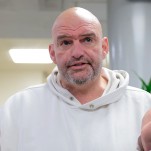My Niece Is a Teenage Instagram Celebrity


My youngest niece and I could not be more different. For one, I am 42 and Arianna is 17. But we have a few things in common.
We’re both the youngest of three, and we both have a small cluster of ailments that swim together in the Kalem gene pool: eczema, allergies. We both grew up in regions overwrought with conformism—she in Boca Raton, Fla., me on Long Island, N.Y. But in terms of our adolescent experience—which she is very much in the midst of, and I, when I am honest with myself, feel like I never completely left behind—we may as well have come of age on different planets.
Arianna and her friends, like me and mine, were, once upon a time, fascinated with IRL popularity. That changed for them when they became the subject of social scrutiny, but not in the way I’d dreamed of—with party invitations, cute surfer-stoners idling on the curb outside of my house, and a Veronica Sawyer-like grip on both the popular kids and the misfits. Instead, where I found pen pals in the back pages of Star Hits and called 1-900 party lines, Arianna and her friends are famous on the Internet.
As of this writing, my 17-year-old niece has more than 45,000 followers on Instagram. At one point she had closer to 50,000. Her number of followers jumped significantly when she started dating her now ex-boyfriend, Dylan, who at the time had around 25,000. They earned an Instagram celeb nickname—#darianna, a la Brangelina. Every photo she posts gets, by my unscientific calculations, an average of 2,000 to 4,000 likes. The ones of just her or her and a few of her girlfriends dressed up (or down, as the case is on a beach day)—as opposed to the ones where she’s with a mixed-gender group, goofing off in science lab or at McDonalds, or photos of my sister on Mother’s Day, about to dig her gift out of a Tory Burch shopping bag—get closer to 5,000. Her photos always get 10 or more comments, and usually closer to 50. She deletes the ones that are negative, toward her or toward other people.
For some reason, a lot of her followers—her fans—are from Brazil, and other countries, too. “They comment in other languages all the time,” she tells me. “I wonder if they think I can understand them? Or what the point is? But some of it isn’t even in the English alphabet.”
Chances are they’re saying something about how perfect she is, how gorgeous her hair or eyes are, or asking where she got that top. That’s what a lot of the comments say. One favorite around my house is simply “sex with you.” Not “I want to have…” but simply the idea, expressed: “sex with you.” It’s not real-world desire; my niece isn’t necessarily real to them. The images she posts, the comments she allows to remain, it all paints a picture of a life to be admired and commented on. In short, it’s what a whole lot of us do with social media. She’s just really, really good at it.
My niece and her friends have blogs devoted to them, written by younger girls in their area code and beyond. Their social media accounts are hacked and impersonated. They are recognized at concerts and at malls. But when you talk to them—as I do, usually when I visit in the fall, descending upon their air-conditioned environs with my tattoos and fun belly and Korean-American husband like a plague of “other” blowing in from the west—they are lovely and polite, spending no more time hunched over their girly-pink iPhone cases than, say, my aforementioned husband.
They toss their shiny hair and smile their orthodontic smiles, laugh at my jokes about viral videos, shrug off questions of what they want to be when they grow up, and otherwise act like, well, decently-adjusted, middle-class teenage girls.
Arianna, along with her friends, became “obsessed” with Tumblr in the eighth grade. They made videos of themselves dancing, and Savannah—Arianna’s best friend, then and now—edited them with iMovie and posted them to Tumblr. And then Savannah got a boyfriend, Jared. And they made a video.
-

-

-

-

-

-

-

-

-

-

-

-

-

-

-

-

-

-

-

-

-

-

-

-

-

-

-

-

-

-

-

-

-

-

-

-

-

-

-

-









































